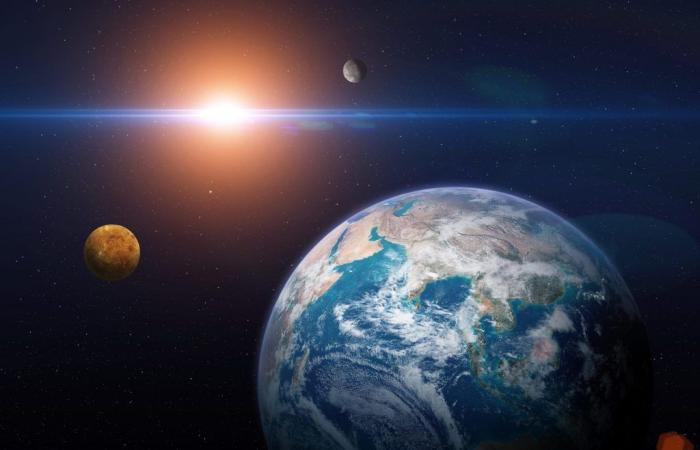We all know that the Earth revolves around the Sun, but in reality this statement (at least these months) is technically FAKE. Indeed, the Earth – like all the other planets, asteroids and comets in the solar system – technically revolves around the center of gravity (or the center of mass) of the solar system itself, which does not coincide perfectly with the center of the Sun. Our star contains approximately the center of the Sun. 99.9% of all mass of the Solar System (approximately 2000 billion billion kg), but depending on the arrangement of the different planets, their mass contribution, although low, can mean that at certain periods the center of gravity of the Solar System is located outside the Solar System. Sun itself (although still nearby). Well, this is one of those times: Earth – but technically also the rest of the solar system, including the Sun itself – is in orbit around it. around the common center of gravity of the entire system, which is currently a point outside the Sun.
What is the center of gravity and where is that of the solar system
The center of gravity is geometric point who behaves as if the entire mass of the body was concentrated there. Its location depends on mean of mass distribution which constitute the body itself, it therefore tends to move towards where the matter is most “concentrated”. The position of the centre of gravity varies over time as do the positions of the planets along their respective orbits, established by Kepler’s laws. The bulk of the contribution to the centre of mass, excluding that provided by the Sun, is provided by the most massive planets, namely Jupiter, Saturn, Uranus and Neptune. Each of these planets tends to “pull” the center of mass towards itself, thus creating sometimes constructive contributions (when the planets are “all on the same side” relative to the Sun) and sometimes destructive (when they are distributed in all directions around our star).
When contributions yes add constructivelythe net result is that the center of mass of the solar system is located outside the Sunup to approx. 700 000 km of its surface. In this period we find ourselves in a constructive situation in which the center of gravity is outside the Sun, while the contributions of the Sun and the planets are in place. they add up in destructive waysthe center of mass tends to fall inside the Sun, up to about 350 000 km from its center (the Sun, for comparison, has a radius of approximately 700,000 km). This will happen in 2029-2030.
In the animation below you can observe the position of the center of gravity of the solar system from 2020 to the next century.
The importance of the center of gravity in astronomy
The same concept applies to any system of orbiting bodies: technically, two (or more) bodies are said to they orbit around the common center of gravity. This also happens with the Earth and the Moon. These two celestial bodies do not revolve around each other, but rather around common center of gravity which is located approximately 4671 km from the center of the Earththerefore just below the surface of the Earth.
Orbiting objects around the center of gravity can be used, among other things, to discover exoplanets outside the solar system. In fact, measuring the radial speed of a star and how it varies due to its oscillation around the center of gravity of the star system, the amplitude of the oscillation gives us information on the mass contribution other bodies that are part of the system, thus leading us to discover if exoplanets exist around a given star.






